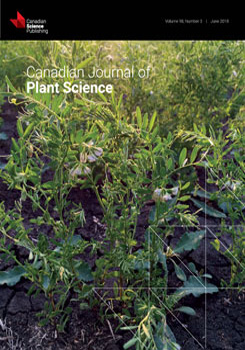Halo blight, caused by Pseudomonas syringae pv. phaseolicola, is a seed-borne disease of dry bean (Phaseolus vulgaris L.) that lowers seed quality and yield. Over 2 yr, laboratory and field studies were conducted to evaluate the effect of microwave radiation on two market classes: navy (‘Envoy’) and white kidney (‘GTS 402’) bean. In the laboratory, seed germination and vigour decreased up to 15% after 40 s of microwave exposure, where <7% decrease was observed during 0–30 s. Disease plating showed no correlation between pathogen colonization of the seed and microwave radiation, as incidence of pathogen colonization was low across all exposure times. In field trials in Morden and Winkler, MB, microwave radiation was tested alone and in combination with copper hydroxide 53.8% and pyraclostrobin fluxapyroxad metalaxyl. Seed treatment with copper hydroxide slightly decreased the incidence of halo blight but had little impact on seed pick, hundred-seed weight, yield, or return on investment. Pyraclostrobin fluxapyroxad metalaxyl seed treatment had no effect on any of these parameters. Microwave radiation lowered seed emergence by up to 9% but did not reduce disease incidence and severity or increase yield or return of investment when applied alone or in combination with a chemical treatment.
How to translate text using browser tools
4 December 2017
Microwave radiation effect with and without chemical seed treatments on halo blight infected seed, seed germination, plant vigour, and yield of dry beans
A.P. Friesen,
R.L. Conner,
D.E. Robinson,
W.R. Barton,
S. Chatterton,
C.L. Gillard
ACCESS THE FULL ARTICLE
It is not available for individual sale.
This article is only available to subscribers.
It is not available for individual sale.
It is not available for individual sale.

Canadian Journal of Plant Science
Vol. 98 • No. 3
June 2018
Vol. 98 • No. 3
June 2018
disease
dry bean
graisse du haricot
halo blight
haricot
maladie
micro-ondes




